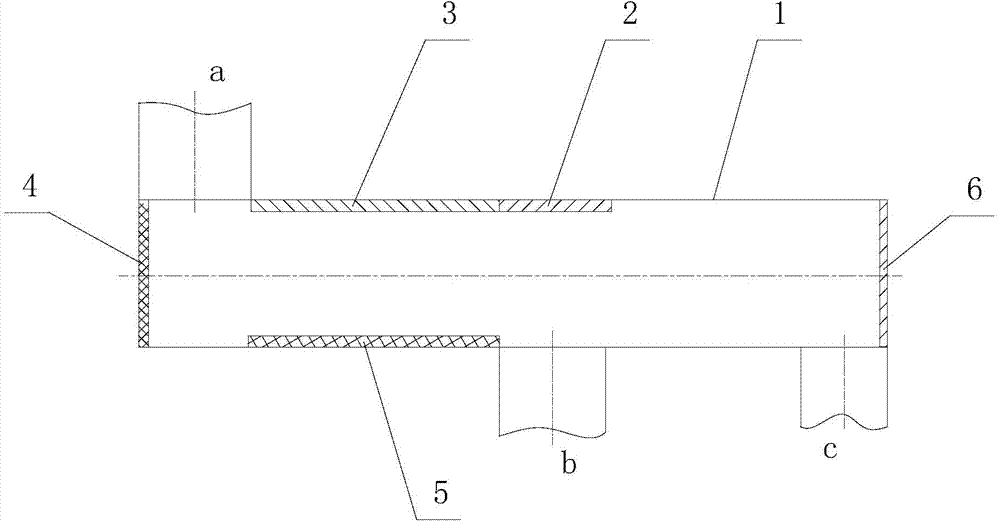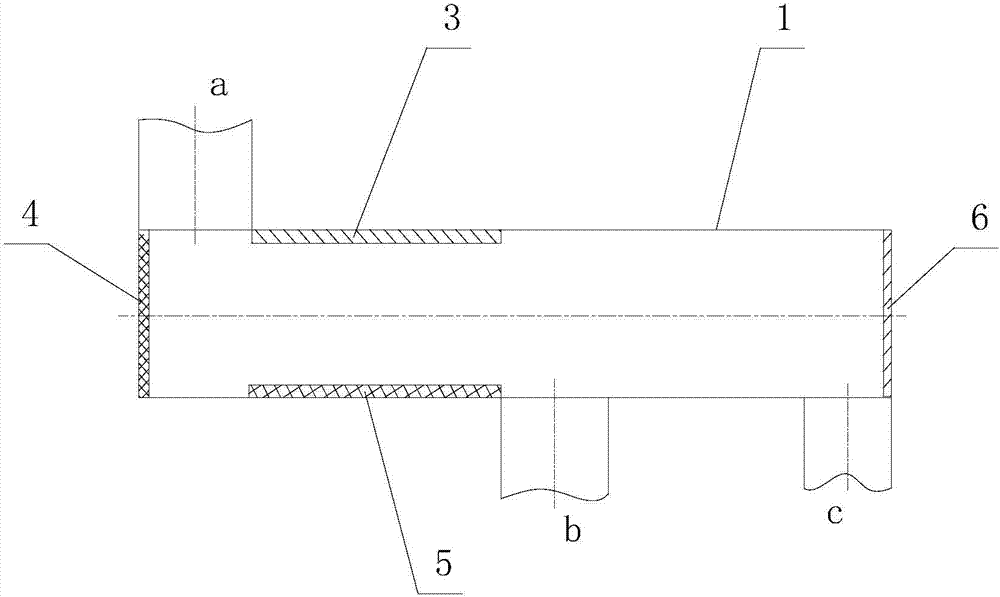Ultrasonic separation device for fine particles
A separation device and fine particle technology, applied in the field of physical separation equipment research, can solve the problems of unsatisfactory effect, huge equipment, long separation time, etc., and achieve the effect of shortening equipment cost, shortening processing time, and compact equipment structure
- Summary
- Abstract
- Description
- Claims
- Application Information
AI Technical Summary
Problems solved by technology
Method used
Image
Examples
Embodiment 1
[0015] Depend on figure 1 It can be seen that the ultrasonic separation device of the fine particles of the present embodiment is composed of a dynamic separation chamber 1, a first ultrasonic transducer 3, a second ultrasonic transducer 6, a sound-absorbing plate 4, a reflecting plate 5 and a third ultrasonic transducer 2 composition.
[0016] The dynamic separation chamber 1 of the present embodiment is 40 mm high, 1600 mm long, 210 mm wide, and has a square cross-section. A water inlet a is processed at the top of the left end, and a water outlet c is processed at the bottom of the right end. The front end of c is processed with particle outlet b. On the top wall of water inlet a, 22 outlets with a frequency of 40KHz and an energy density of 12J / m are installed side by side. 3 The first ultrasonic transducer 3, the first ultrasonic transducer 3 is a piezoelectric transducer, its sound wave direction is perpendicular to the water flow direction, its total length is 1300mm, ...
Embodiment 2
[0019] The dynamic separation chamber 1 of the present embodiment is 75mm high, 2100mm long, and 210mm wide. The front end of c is processed with particle outlet b, and on the top wall of water inlet a, 32 outlets with a frequency of 20KHz and an energy density of 12J / m are installed side by side. 3 The first ultrasonic transducer 3, the first ultrasonic transducer 3 is a piezoelectric transducer, its sound wave direction is perpendicular to the water flow direction, its total length is 1800mm, the radiation surface of each first ultrasonic transducer 3 The diameter is 100mm, the distance between the first adjacent ultrasonic transducers 3 is 10mm, and the processing time is about 49s. A reflection plate 5 is installed at the bottom of the dynamic separation chamber 1 at the front end of the particle outlet b. The reflection plate 5 The length is 1800mm, the width is 210mm, and the thickness is 2mm. It is a flat plate made of stainless steel material. The distance between the ...
Embodiment 3
[0022] In this embodiment, the dynamic separation chamber 1 is 30mm high, 1980mm long, 210mm wide, and has a square cross-section. A water inlet a is processed on the top of the left end, and a water outlet c is processed on the bottom of the right end. The front end of the water inlet c is processed with a particle outlet b, and on the top wall of the water inlet a, there are 30 parallel installations with a frequency of 50KHz and an energy density of 12J / m 3 The first ultrasonic transducer 3, the first ultrasonic transducer 3 is a piezoelectric transducer, its sound wave direction is perpendicular to the water flow direction, its total length is 1680mm, the radiation surface of each first ultrasonic transducer 3 The diameter is 100mm, the distance between the first adjacent ultrasonic transducers 3 is 10mm, and the processing time is about 48s. A reflector 5 is installed at the bottom of the dynamic separation chamber 1 at the front end of the particle outlet b. The reflector...
PUM
| Property | Measurement | Unit |
|---|---|---|
| energy density | aaaaa | aaaaa |
| thickness | aaaaa | aaaaa |
Abstract
Description
Claims
Application Information
 Login to View More
Login to View More - R&D
- Intellectual Property
- Life Sciences
- Materials
- Tech Scout
- Unparalleled Data Quality
- Higher Quality Content
- 60% Fewer Hallucinations
Browse by: Latest US Patents, China's latest patents, Technical Efficacy Thesaurus, Application Domain, Technology Topic, Popular Technical Reports.
© 2025 PatSnap. All rights reserved.Legal|Privacy policy|Modern Slavery Act Transparency Statement|Sitemap|About US| Contact US: help@patsnap.com


